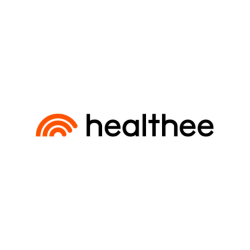Samantha Clark is a Warrington College of Business graduate. She handles all client relations with top-tier partners for the professional accounting firm, ThePayStubs, and writes articles on various finance and business-related topics. Views are the author's own.
Automation has been slowly lurking and shaping the future of work for years now. And with the pandemic outbreak, the workforce landscape changed drastically, both for recruiters and job seekers. Keeping up with these trends and being aware of how automation has changed HR will help stakeholders adjust to the new way of hiring and working.
Recruiting and hiring
Automation and artificial intelligence will play a massive role in HR and recruiting. Some of these changes are already happening, while others are yet to come.
Today, online job interviews are already considered a norm. But, companies have also started incorporating other innovative solutions, such as online assessments that will build rapport early in the selection process without the need for job seekers to go through a hideous recruitment funnel.
Technology will automate the screening process by requiring fewer in-person visits and reduce time-to-hire. Automation will also simplify the process on the job seekers’ end. For instance, organizations can implement chatbots or automated interview scheduling software for candidates to choose the most convenient time slot for their interviews and import it directly to their calendars.
L&D access
HR automation won’t influence only job seekers but also current employees. For instance, it can help organizations design streamlined learning and development workflows and help their employees reskill or upskill. With this, employees can feel more confident in terms of digital skills and new technologies. According to a recent Statista L&D report, a majority of respondents agreed that upskilling and reskilling should be the main priority for companies globally, followed by leadership and management development.
Providing continuous learning and development possibilities is one of the best employee engagement strategies organizations can use to increase retention rates.
Payroll and scheduling
Before remote work became the norm and automation entered the picture, HR managers manually calculated all employees’ wages, time attendance, benefits, and compensation.
Now, they can rely on automation for such tasks. Payroll self-service tools also can increase transparency within your organization, allowing employees to see a breakdown of their compensation.
Automation also will continue to grow in the area of intelligent scheduling, keeping all full- or part-time employees informed about their shifts in real-time and providing last-minute staff coverage.
With the expansion of remote working, job seekers today can access a global job market more effortlessly. As a result, employees worldwide are increasingly considering flexible, freelance, or part-time jobs as more lucrative solutions to manage their work-life balance and earn more.
According to a 2021 Statista report on hybrid work, most employees want flexible remote work options to stay post-pandemic. Companies that want to retain top talent must get used to providing some type of flexibility in their staff’s schedules. They’ll also have to simplify scheduling and make it transparent. That’s why automation plays a huge role in this aspect of employee management.
As the global workforce increasingly adopts hybrid or remote work models, automation will play an equally increasing role for HR to manage job seekers and employees. This new decade will push companies to shift their focus to employees and use data and automation to improve things like onboarding, training, productivity and the overall employee experience. Companies are becoming increasingly aware that their employees play a huge role in their overall success, and automating different HR processes brings enormous benefits to a potential candidate and employee.













